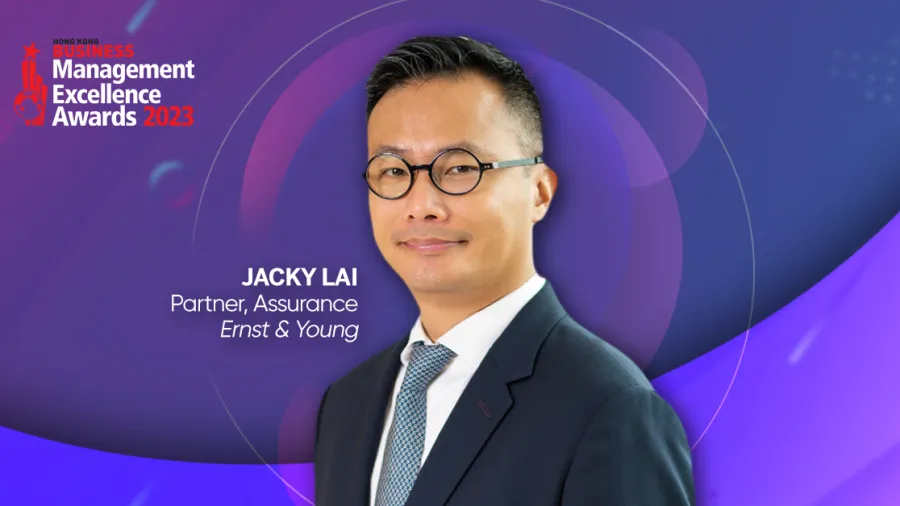
EY’s Jacky Lai: Effective transformational leaders combine IQ and EQ to successfully navigate change
For the EY Partner, recognising the significance of human aspects within operations is vital for lasting transformation, moving beyond surface-level acknowledgement.
The bustling business environment in Hong Kong is undergoing a profound transformation amidst the complex interaction between local aspirations and global influences. Spurred by a blend of global challenges and rapid technological advancements. These challenges form the backdrop against which businesses must recalibrate their strategies for growth and resilience.
Heightened global uncertainties, coupled with the persistent wave of technological advancements, have prompted companies to rethink their operations and redefine their approach to staying competitive.
In the midst of this transition, Jacky Lai, Assurance Partner at EY, sheds light on the strategies and attributes crucial for enterprises to not only weather the storms of change but also excel in today's dynamic and evolving business landscape.
With over 25 years of experience spanning diverse sectors, Lai brings a comprehensive view of Hong Kong's business ecosystem. His role as a Partner at Ernst & Young underscores his proficiency in steering businesses through complex financial terrains, particularly in navigating Initial Public Offerings and cross-border listing procedures. Lai's experience with International Financial Reporting Standards (IFRS) and Hong Kong Financial Reporting Standards (HKFRS) is also a testament to his ability to manage intricate financial intricacies.
In an interview with Lai, we get a glimpse into his perspective on the changing business landscape and the strategies that can guide businesses towards excellence in these times of transformation. In his insights, two key themes emerge: the delicate equilibrium between transformation and sustainability and the pivotal role of emotional intelligence in digital evolution.
Now that the business landscape in Hong Kong has adapted to a new normal, what do you believe are the key factors that can impact business growth and excellence in the region, and how can businesses effectively navigate these factors to sustain and expand their operations?
The weak global demand, high interest rates, and brain drains are the burning challenges now in Hong Kong. Leaders are reframing their businesses to adapt to a new landscape by innovating their business models, elevating their customer experience, and finding new ways to leverage data and technology. This demands a careful balance: sustaining performance whilst investing in the skills, technologies, and resources to accelerate growth and create new opportunities. Whilst speed and change are imperatives, businesses can’t afford for their transformation to fail. Those who succeed do more than prosper; they create exponential value that lasts. What we have seen from companies that create exponential value is that they place humans at the centre of their organisation, leverage technology at speed, and innovate at scale. These new drivers of value creation demand a fundamental shift both in how companies reorient to create value and in what they value — agility versus predictability; innovation versus strategic planning; systems thinking versus operating model. It’s a transformative mindset that also requires the parallel processing of multiple, interdependent time horizons: 70% of effort now to build a foundation for future growth; 20% of effort on new value propositions and optimising existing capabilities for 12 months from now; and 10% of effort on exploring completely new and disruptive opportunities for the future.
In this era of digital transformation, what specific strategies or solutions do you think companies in Hong Kong should adopt to stay competitive and enhance their management practices? How can these technologies drive innovation and excellence in business management?
To achieve a successful transformation within an organisation, a leader must possess not only a high IQ but also a considerable amount of EQ. Over the past few years, many companies have come to realise that embedding the human aspect permanently within the organisation and its operations is critical, rather than just paying lip service to it. Previously, the emphasis was on implementing new processes and technologies, KPIs, and other "hard" elements. Whilst emotional safety, leadership, and the right approach were on the agenda, they were often just buzzwords and not integral parts of the organisational culture. In hindsight, people realise that they should have prioritised the human element much earlier, resulting in setbacks or a lack of adoption. For example, when a new digital tool is introduced, IT is typically responsible for its implementation. However, after a year of rollout and implementation, management may conclude that the tool is not being used correctly or is unpopular. This leaves them wondering why. Perhaps people do not understand the tool's purpose, lack enthusiasm for it, or the skills to use it effectively. In short, negative emotions surround the tool.
There are a few drivers to make the transformation a success.
The first is acquiring the right leadership skills. It always starts with the leader and their position as a role model. But often leaders are placed in their position because they excel technically, which means they can manage but not lead - they show sufficient IQ but underestimate the necessary EQ. That makes them blind to what their people go through in terms of emotions on a daily basis. In transformation projects, those emotions are usually positive in the early stages, until they take an inevitable dip - because we are creatures of habit who always face some form of stress when change occurs, often coupled with a higher workload demanded by the project. People experience a realisation of the seriousness of the situation, leading to the dip. At that critical juncture, effective leaders utilise an emotional connection to reverse the downward spiral and elevate the success curve. Failure to do so will result in a continued descent until the curve flatlines. Fortunately, emotional intelligence can be cultivated through proper training, which many leaders have not had the opportunity to receive. Ultimately, strong leadership is the glue that holds all the drivers of success together, making leader training a highly worthwhile pursuit.
The second driver is the presence of a clear Pole Star, which refers to an inspiring vision that is supported by all individuals in the organisation and motivates them to follow. In this aspect, the leader plays a vital role in articulating the underlying vision or purpose of a transformational initiative and disseminating it widely amongst team members. When the vision becomes deeply ingrained in the organisation, it can act as a guiding light, driving and unifying all stakeholders towards achieving common goals.
The third driver is culture. During a transformation project, it's essential to recognise the shift in mindset that's required. To fully embrace this change, it's crucial to establish activities that promote engagement, feedback, and psychological safety, allowing everyone to express their thoughts and opinions openly. It's important to pause periodically and reflect on the progress made so far. Listening to feedback and taking action is critical. Additionally, involving change ambassadors, early adopters, and influencers is necessary since they can have a significant impact on the success of the project. Sometimes, even the most vocal critic can become the most ardent supporter of the initiative. In addition, fostering a collaborative and co-creative culture is crucial in ensuring the success of the change. It is important to avoid imposing the change from the top down and instead, allow it to be driven from the bottom up. By involving people in the change process, they will feel empowered to shape their own future and contribute to building it effectively.
Diversity and inclusion (D&I) are essential aspects of modern business. What specific practices or initiatives do you consider as indicators of an organisation's commitment to creating an inclusive and empowering environment for stakeholders in Hong Kong?
Diversity is about differences. We should think about differences broadly, across a wide range of dimensions, such as nationality, language, education, gender and gender identity/expression, sexual orientation, generation, age, socioeconomic background, religious background, abilities and disabilities, as well as identity dimensions defined and constructed by some societies in ethnic, colour, cultural, or racial terms. There are also differences according to working and thinking styles, experiences, career paths, technical skills, geography, service line, sector, and function.
Inclusiveness is about leveraging our differences, where everyone experiences a sense of belonging and feels safe to surface many aspects of who they are and bring forward their perspectives and ideas.
In order to leverage the full power of D&I in this region, we could consider how best we do in several D&I pillars:
- Cultural Diversity: Whether a diverse workforce is built, how to empower and embrace inclusive behaviours, and how to foster community engagement by partnering with NGOs.
- Female Leadership: Whether there are policies and approaches to promote gender equity and women empowerment.
- Inclusive Leadership: Inclusive leaders show curiosity, agility, and happiness, which can stimulate and create a better sense of teamwork and belonging for the people around them.
- Unity (LGBT+ inclusion): Any network for lesbian, gay, bisexual, and transgender people and their straight allies. It aims to create an environment where individual differences are celebrated — where people are supported to achieve their personal potential whilst meeting the ever-changing needs of customers.
- Wellbeing: Any programmes to increase employees' engagement and reinforce organisational mission and vision, such as employee assistance programmes, health care webinars, and other interactive activities.
Drawing from your extensive experience in audit and assurance services, what are the key challenges that companies in Hong Kong face when it comes to maintaining strong internal controls and adhering to high financial reporting standards, and how can these challenges be addressed?
Many organisations have not materially modified and enhanced the way they manage their systems of internal controls or financial reporting systems in response to changes in the business and regulatory environment. Leading-practice organisations have established a sustainable process to periodically refresh their internal control programmes to respond to changes in the marketplace and even use it as a platform to make more holistic changes and improvements.
Technology will continue to rapidly evolve, upending the way companies do business and making them more vulnerable to bad actors looking for ways to infiltrate their systems. For larger organisations, an automated reporting system and progressive internal control process have to happen through a complex mix of progressive and agile internal audits, digitally-enabled processes, automated compliance processes, etc. to overcome the challenges.
With your experience and insights, what do you believe are the essential skills and qualities that business leaders should focus on developing to succeed in today's competitive and rapidly changing business landscape?
Anticipating a shorter but more severe recession in 2023, business leaders across Asia-Pacific have to make strategic choices that emphasise resiliency, efficiency, and quality—switching gears from years of rapid growth and scale. How business leaders achieve this defensive posture is crucial: business leaders must find the right balance between building up a solid enough shield to weather the severe part of the downturn, and overprotecting, which could leave organisations poorly positioned to accelerate back to growth when the shorter downturn ends abruptly. Surviving the downturn is important, but they also have to look ahead to shore up their market position. Subject to different industries and different stages of the business, business leaders may split between defensive measures like adapting the supply chain for resiliency, divesting low-performing business units, and shoring up quality talent; and offensive measures such as investing in early-stage businesses, acquiring businesses in adjacent sectors, and building up sustainability or ESG capabilities to engage customers.
As a judge at the Hong Kong Business Management Excellence Awards, could you share the key criteria you use when evaluating the nominees?
I am keen to observe how business leaders act on global challenges and adopt new technologies under the current challenging economic and geopolitical environment.

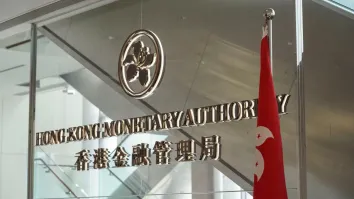











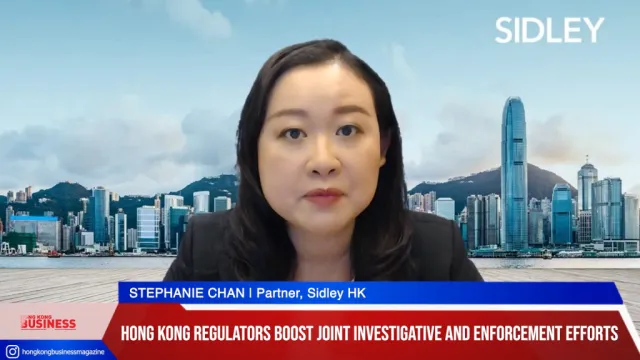
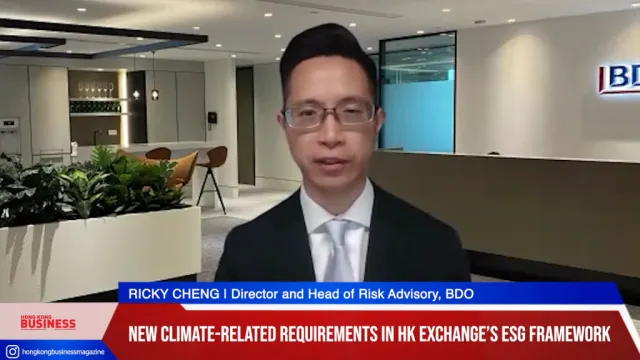
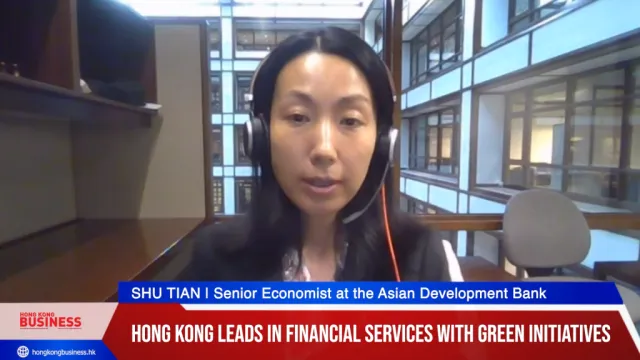
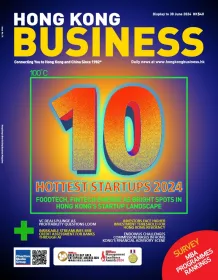
 Advertise
Advertise






